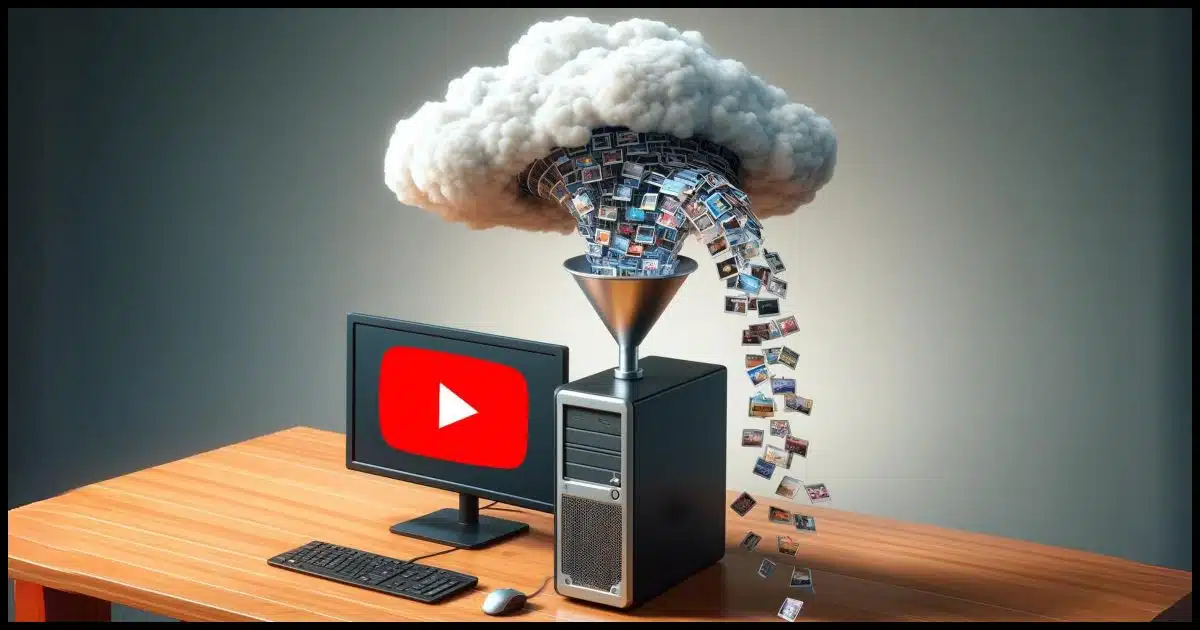The differences explained.

For many services, including the videos I host myself, the situation is straightforward.
However, YouTube and similar services are more sophisticated, making this a little bit harder to explain.

Streaming a video uses data equivalent to downloading the video each time you watch. Downloading once lets you watch the file multiple times without additional data usage. YouTube and other services may adjust streaming quality dynamically based on your connection. Downloads offer consistent quality and save data on repeated viewings.
Streaming: each watch is a download
In the simplest case, when you watch a video using a player on a webpage, that video is still being downloaded (or transferred) to your machine; it’s just being played immediately and discarded. Thus watching it once is roughly the same as downloading it once. Watching it twice downloads it twice.
This is true of the videos that are part of my online courses. Each time you watch the video using the player on the course website, the video is streamed or downloaded to your machine.
Download: watch multiple times
If you download a video via a provided link or a tool that does so for you, then you do so once. The data is downloaded and stored on your hard disk. After that, you can play it however many times you like using the media player of your choice.
Help keep it going by becoming a Patron.
Dynamic streams
This is where things get muddy on sites like YouTube.
First, there can be many different versions of a video file. The most obvious difference is resolution. A 4K movie (3840×2160, four times the resolution of a standard High-Definition version) will be larger than a full HD file (1920×1080), which in turn is larger than an SD (Standard Definition) version (640×400).
Another difference is the quality of the video. Video encoders can produce a very high-quality image. The cost, of course, is that those videos will be larger than a video encoded with a lower-quality setting.
In order to stream a movie without starts and stops, your internet connection must be able to download that data fast enough. Your stream may start with a small test, very quickly before the video plays, to determine how fast your internet connection is. The service then picks a resolution or quality level that should play continuously at that speed.
More advanced services, like YouTube and most streaming services, monitor the progress as the video is being played. They may reduce or increase the quality while the video is being played. You’ll notice that images are sharper and clearer or fuzzier as the quality changes. Higher quality implies more data, which requires higher speeds to download smoothly.
YouTube downloads
So how does this all apply to you and YouTube?
Depending on your download tool, you’ll download a video at a specific resolution. Often you’ll get to choose from several alternatives. The video is downloaded to your hard drive only once, and when you play it, your internet connection is not involved.
When you stream a video using YouTube’s player, the amount of data transferred may be the same, more, or less, depending on the resolution and quality that YouTube elects to give you based on your internet speed.
But one thing is certain: watching a video directly from YouTube or any other video and/or streaming service causes data to be transferred each time. Downloading and then watching the downloaded copy transfers the data across your internet connection only once.
Do this
Particularly if you’re on a slow internet connection, downloading may be a great choice. It doesn’t matter if a one-hour show takes two hours to download if you can watch it thereafter at full speed, especially if you’ll watch it more than once.
On the other hand, many internet connections are now fast enough to easily handle the amount of data involved in streaming data. In other words, it might just not matter, unless, perhaps, you have a metered connection.
This matters: subscribe to Confident Computing! Less frustration and more confidence, solutions, answers, and tips in your inbox every week.




One other factor in this is if you download a video from YouTube, you might be downloading twice depending on how the downloader works, once while watching and another download to save it to your computer. Some downloaders save the video while it its streaming or another might save the temporary file which is downloaded, still others will start a completely new download.